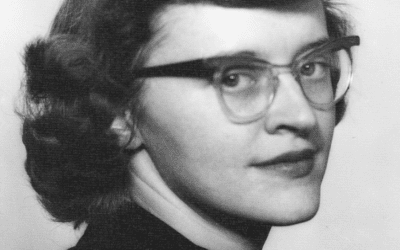
Necessity may be the mother of invention, but these inventions were born right here in Michigan.
MICHIGAN—Curious about the Edisons and Gutenbergs of Michigan? Here are some of the most famous inventions to have come from the west side of the Mitten:
Pop-Tarts (1964)
Inventor: Bill Post

Most Michiganders already know that Battle Creek is the Cereal Capital of the world for its ties to Kellogg’s. But many often overlook the fact that Pop-Tarts were also invented by a Michigan man: Bill Post, of Grand Rapids. He celebrated his 95th birthday this year.
In the 60s, Post—who was then the plant manager for Keebler—got a call from Kellogg’s to help them create a breakfast food that could be made in a toaster. Post reportedly took four weeks to troubleshoot the issue before he cracked the code, ultimately figuring out a process for how to put thin sheets of dough and frosting through a 300-foot oven without melting.
The Cleveland market tested Pop-Tarts in shopping malls at first, but then shifted marketing to children. They were an instant hit—and today still remain a national breakfast mainstay.
Fun fact: Post is said to enjoy his own invention. He prefers frosted strawberry, untoasted.
Snowboard (1965)
Inventor: Sherman Poppen

Michigan truly is a winter wonderland—so it shouldn’t be shocking that it’s home to one of the most popular winter sports of all time: snowboarding, which was born in Muskegon.
Now known as the “grandfather of snowboarding,” Sherman Poppen, reportedly came up with the initial concept for the snowboard, the “Snurfer,” on Christmas Day back in 1965.
As the story goes, Poppen’s wife was only a few days shy of giving birth to their third daughter—and she desperately needed a break from a house full of energetic girls. So, Poppen took his daughters on a trip to the sand dunes behind their Muskegon home.
The snow was too thin for sledding, so Poppen bolted together snow skis into a makeshift board. The girls ended up having a blast on the invention, which they named the “snurfer,” for a combination of snow and surf. And Poppen decided to take the board to market.
Brunswick Corp. bought the patent from Poppen—and sold more than a million boards. Poppen also stayed involved in his newly created sport, organizing the first snurfing competition at Blockhouse Hill, now a part of Muskegon State Park, in 1968. It attracted the attention of people like Jake Burton Carpenter, who went on to found Burton Snowboards.
Others improved on Poppen’s snurfing design with bindings and steel edges for traction, but Poppen is still regarded as its original inventor—for without snurfing, there’s no snowboarding. Poppen died in 2019. His daughter, Laurie Poppen, still lives in Michigan.
Cat Litter (1947)
Inventor: Edward Lowe

Any Michigander who owns a cat owes some gratitude to this next inventor—for without his accidental invention in the winter of 1947, it’s likely your house might not smell too pleasant.
Back then, cats were mostly kept outside. And when necessary, people used ashes, dirt or sand indoors as the absorbent material to soak up their urine. It was a messy business.
Cassopolis resident Edward Lowe was working at his father’s sawmill when his neighbor asked for some sand to use as cat litter. Instead, Lowe gave her a bag of kiln-dried granulated clay—used to mop up grease spills—that he happened to have in his trunk.
The neighbor came back a few days later eager for more clay, and Lowe decided to take his product to market, branding it in five-pound sacks. He even first coined the term “Kitty Litter.”
Throughout the 50s and 60s, Lowe toured pet shows across the country to promote his product. Eventually, it found its way into supermarkets, and quickly became a household staple for all cat owners—perhaps contributing to the popularity of cat ownership nationwide. In 1985, cats officially passed dogs as the most popular American pet for the first time.
Edward Lowe Industries eventually expanded in 1964 to include the Tidy Cat brand—and by the 90s, his company was the leading producer of litter box filler nationwide. Lowe ultimately sold his operation to the Ralston Purina Company for $200 million before he died in 1995.
Cast Saw (1947) and Electric Hospital Bed (1958)
Inventor: Homer Stryker
Notable Western Michigan University alumnus Homer Stryker was many things—a teacher, an orthopedic surgeon, a businessman, a US Army veteran, and, of course, an inventor.
Stryker was born and raised in Kalamazoo County, where he stayed most of his life. After teaching in the Upper Peninsula, serving in the US Army during World War I and graduating from the University of Michigan Medical School, he opened his own practice in Kalamazoo.
During his career, Stryker noticed that certain orthopedic procedures were simply not working for his patients, and he began working on a turning frame for hospital beds to reduce incidences of bedsores, as well as a new rubber heel for walking casts. The US Army was interested in Stryker’s inventions and bought several of his turning frames during WWII.
From there, Stryker shifted more from practice to invention, starting the Orthopedic Frame Company, which would eventually be called the Stryker Corp. His next big invention: The Stryker saw, which would be used to cut both casts and bones, and assist with autopsies.
Stryker passed away in 1980, but the Stryker Corporation and the Stryker family still call the Kalamazoo region home. Today, the company is one of the world’s leading medical technology companies, reporting $17.1 billion in sales and 46,000 employees in 2021.
Stryker Field at the Mayor’s Riverfront Park in Kalamazoo is also named in Stryker’s honor.
Canned Baby Food (1928)
Inventor: Daniel Frank Gerber

The Fremont Canning Company formed in 1901 to fill an important niche for Michigan’s Fruit Belt—canning berries, beans, peas, and other produce for local farmers. But it took 26 years before its founders found their most lucrative calling: Making canned food just for babies.
In 1927, Daniel Frank Gerber made the discovery that would change his family’s company forever. At the time, his infant daughter had fallen ill and required a specialized diet—which then required more expensive ingredients, and laborious cooking and straining methods.
Frustrated with the inconvenience, Gerber got to work at his canning company to research ways to create a healthier—and less time intensive—canned diet for his daughter. The company was already making similar products for adults. Gerber shifted the demographic.
The first baby food products included health-focused options like carrots, spinach, peas, prunes, and beef vegetable soup. The company also marketed the products nationwide—including popular placements in magazines like Good Housekeeping. And that now ubiquitous sketch of an infant, which became known as the Gerber Baby, was born.
The Fremont Canning Company officially changed its name to the Gerber Products Company in 1941, and expanded its product line to include baby bottles, pacifiers, and even life insurance. Gerber moved its operations out of Michigan entirely by the 1990s, but Fremont still celebrates the Gerber heritage with a National Baby Food Festival.
Today, Gerber still produces about 60% of the prepackaged baby food sold in the US.
Synthetic Penicillin (1957)
Inventor: John Sheehan
John Sheehan was born and raised in Battle Creek, with a well-known family in the area.
His father was a writer and editor for The Battle Creek Enquirer and his mother was a popular genealogist in the area. And as a child, Sheehan struggled with pneumonia and mastoiditis—infections which were only made worse by a lack of antibiotic treatment.
Sheehan studied chemistry at Battle Creek College and organic chemistry at the University of Michigan. After earning his Ph.D. in 1941, he quickly started working on antibiotics.
At the time, natural penicillin took months to produce, and the US government wanted to synthesize the drug, especially for wounded soldiers on the battlefield in WWII. More than 1,000 chemists had been recruited to help, and none were successful before Sheehan.
In 1957, Sheehan was the first to discover how to re-assemble penicillin molecules—and his invention led to the manufacture of several tailor-made forms of penicillin, like Ampicillin. Sheehan died in 1992, but his monumental contributions to the medical community live on.
Furniture Designs (Late 1800s)
Inventor: David Kendall

You may be familiar with Ferris State University’s Kendall College of Art and Design in Grand Rapids. The school is named after furniture designer extraordinaire David Wolcott Kendall.
Kendall moved to Grand Rapids at the peak of its booming furniture industry in 1877—making stunning designs for multiple popular furniture manufacturers. During his career, he was said to have been the most widely copied furniture designer in the US.
Kendall’s inventions—including wood finishes like Antique Oak, Jacobean, Sixteenth Century Early English, and Cremona Malachite—helped to set national standards for the furniture industry. He also developed several important chair designs, like the McKinley chair, which got its name after President William McKinley had one put in the White House.

VIDEO: Trump isn’t the only republican facing charges for alleged financial crimes
https://www.tiktok.com/@gandernewsroom/video/7361494909938978090 A whole lot of Michigan Republicans and lobbyists are facing criminal charges for...

VIDEO: It’s expensive to be poor in Michigan
https://www.tiktok.com/@gandernewsroom/video/7361154790300060974 Ever heard of predatory payday loans? Here’s how new laws could help protect...

Here’s everything you need to know about this month’s Mercury retrograde
Does everything in your life feel a little more chaotic than usual? Or do you feel like misunderstandings are cropping up more frequently than they...

The ’Gander wins multiple 2023 Michigan Press Association awards
MICHIGAN—The ’Gander Newsroom has earned multiple awards in the 2023 Michigan Press Association Better Newspaper Contest. The awards were announced...

Michigan Republicans ask Supreme Court to restrict medication abortion access
A lawsuit supported by Republicans could disrupt access to the most common form of abortion—even in Michigan, where reproductive rights are...




